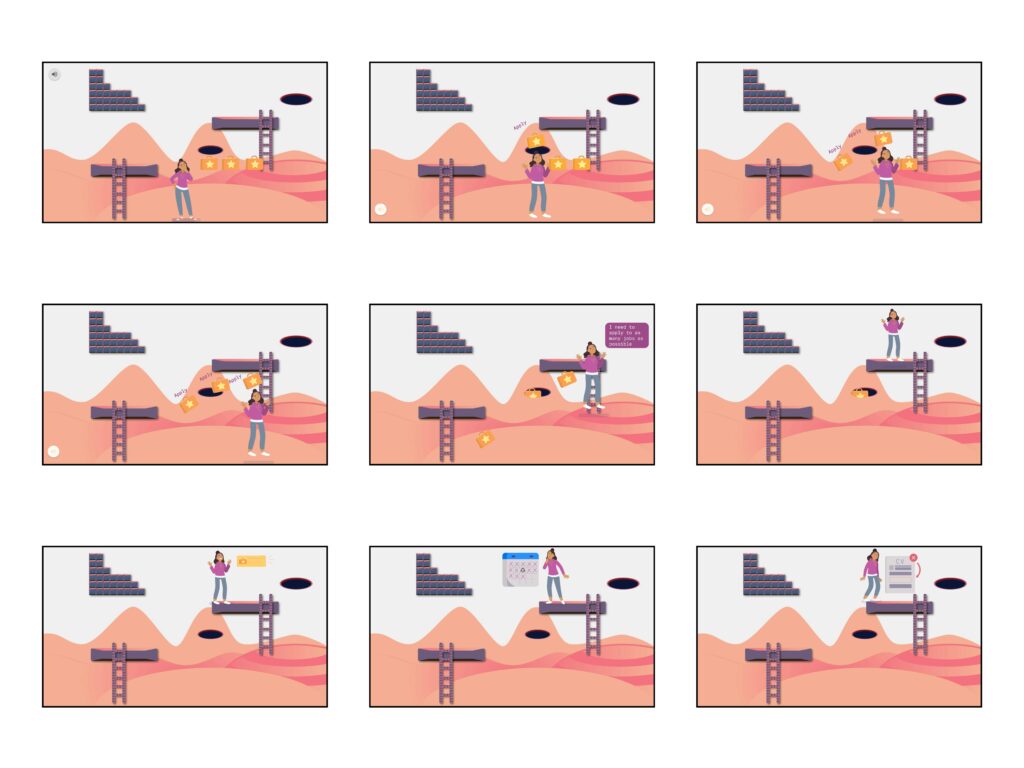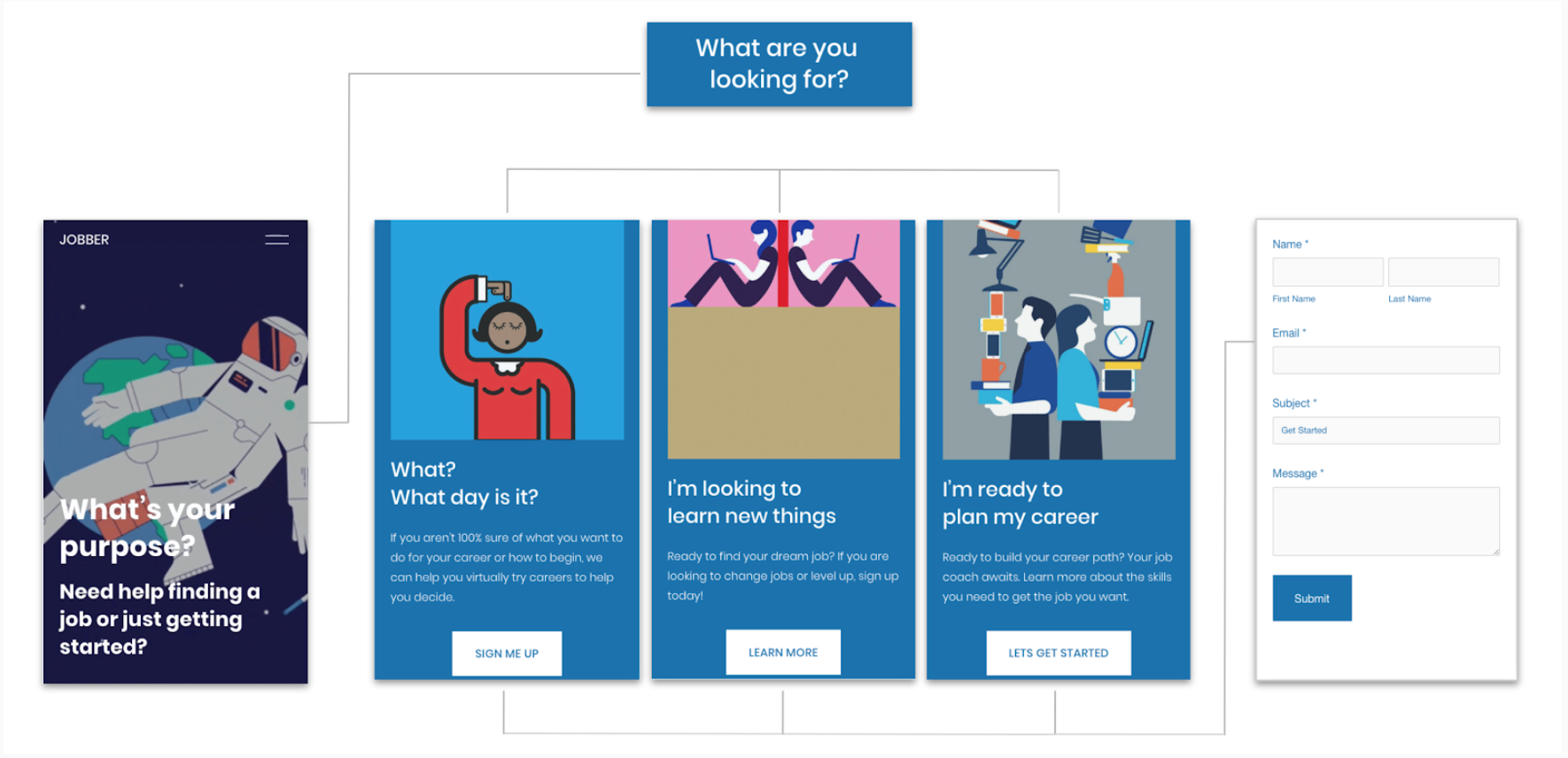Opportunity
Our client created a job aggregator plugin for a human capital management software vendor. With their main focus being students, the plugin would integrate into a student’s coursework in college so “Jobber” would be with them at the start of their career. Our team of four had very different experiences in job searching, we began to look at the ways individuals find and secure a job.
Challenge
- Determine the jobs-to-be-done (and priorities therein) for all customer segments.
- Develop updated value propositions and business model options related to the jobs to be done.
- Create an engaging user experience for students in their job search with a User Experience Design Team.
- Expand from the current business model and provide recommendations that can use years down the line. Test and refine value propositions and business model options with customers.
- Develop a strategic approach to implement value propositions and business model options.
Process & experience
Our team dove into the four phases (understand, innovate, validate and execute) of rethinking a business model while also discussing effective storytelling techniques. First, we mapped trends and put forth our perspective as students to use the product through the Context Analysis canvas.
With a solid foundation, we began ideating about the “What ifs” to create business model options. Within each option, our team developed a pretotype to share with our network to test and validate. By proving (or disproving) these assumptions, we learned the career journey of a student and solved for the missing holes in this journey. The proposed business model gave a voice to the product through the student’s lens with new value props and customer relationships.
During the pretotype/validation phase of the project, through a microsite that had an embedded survey allowed us to collect insights to scale.
Our team began to see the consumer journey and how important it was to build the right support systems for students coming into the job world for the first time. While all students had an understanding of what a career in their major could look like, getting there was more than half the battle.
Outcome
By remaining flexible and keeping all ideas on our Miro boards, our team could cluster new jobs-to-be-done through the validation and research process to streamline the value propositions. Our team listened to our client to ensure the primary value of the company, link HCM customers’ jobs to emerging higher education talent (students) seeking careers upon graduation.
Furthermore, our team knew we wanted to communicate the following in our final presentation:
- Think about the journey from the perspective of the student
- The app grows and evolves with student
- Guide students through a time thats new and mysterious
To pitch our strategy to the client, we shared the customer journey through the eyes of our user, Faan. We shared how the app could gamify its way to communicate with students. From there, we set up a five year timeline with an ambitious and future strategy to help our client see where they may go with its product and service.


To view additional details about this project, please click here to view a deck outside of this site.
Credits
Class project: Business Models, DMBA program at California College of the Arts
- Anita Chordia – Communications, Strategy
- Niki Chikate – Design, Strategy
- Aksharika Raja – Product, Strategy
- Felicia Reyes – Creative, Strategy
